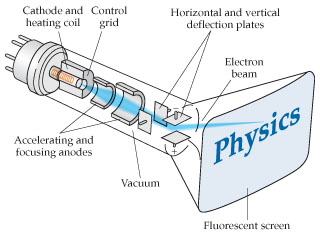

Aluminum filters are installed in the path of the X-ray beam to remove "soft" (non-penetrating) radiation. The range of photonic energies emitted by the system can be adjusted by changing the applied voltage, and installing aluminum filters of varying thicknesses. The X-Ray photon-generating effect is generally called the Bremsstrahlung effect, a contraction of the German brems for braking, and strahlung for radiation. The old tube assembly is shipped to a company that reloads it with a new X-ray tube. At this point, the tube assembly (also called the "tube head") is removed from the X-ray system, and replaced with a new tube assembly. As time goes on, the tube becomes unstable even at lower voltages, and must be replaced. This arcing causes an effect called "crazing" on the interior glass of the X-ray window.

The arc will jump from the cathode to the tungsten deposit, and then to the anode. Eventually, the tungsten deposit may become sufficiently conductive that at high enough voltages, arcing occurs. This will slowly darken the tube and was thought to degrade the quality of the X-ray beam, but research (cf., Half-Value-Layer Increase Owing to Tungsten Buildup in the X-ray Tube: Fact or Fiction, John G. Over time, tungsten will be deposited from the target onto the interior surface of the tube, including the glass surface. About 1% of the energy generated is emitted/radiated, perpendicular to the path of the electron beam, as X-rays. This followed the electronics technology of switching power supplies (aka switch mode power supply), and allowed for more accurate control of the X-ray unit, higher quality results, and reduced X-ray exposures.Įlectrons from the cathode collide with the tungsten (and sometimes molybdenum) target deposited on the anode and accelerate other electrons, ions and nuclei within the deposited material. In the late 1980s a different method of control was emerging, called high speed switching. Until the late 1980s, X-ray generators were merely high-voltage, AC to DC variable power supplies. This enables consistent doses of x-rays, and taking snapshots of motion. In many applications, the current flow (typically in the range 1mA to 1A) is able to be pulsed on for between about 1ms to 1s. A high voltage power source is connected across cathode and anode, for example 30 to 150 kilovolts (kV).



 0 kommentar(er)
0 kommentar(er)
